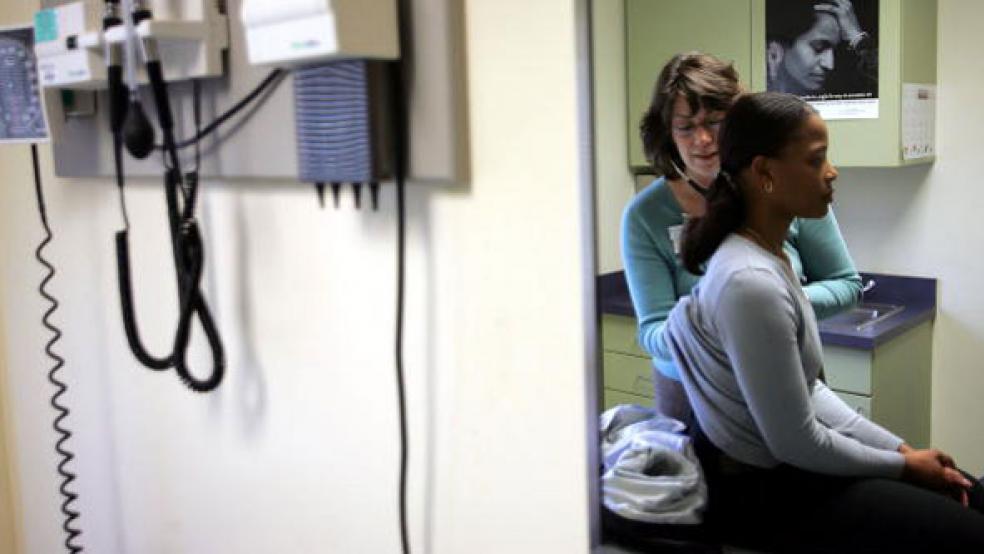The costs of outpatient care – and of errors associated with that care – is rising, according to a new study in the Journal of the American Medical Association. The study found that of 10,739 malpractice claims paid on behalf of physicians in 2009, 48 percent were in the inpatient setting, while 43 percent were in the outpatient setting. (An additional 9 percent of payments involved events that occurred in both settings.) The study also found that the proportion of malpractice claims paid for errors that occurred in outpatient settings increased slightly between 2005 and 2009.
![]()
Though the focus of patient safety efforts in recent years has been on problems in hospitals rather than in outpatient settings such as doctors' offices and urgent care centers, the study suggests that more attention needs to be paid to the mistakes that happen outside the hospital. Most people receive health care in outpatient settings: There are more than 950 million visits to physician offices annually, compared with just 34 million hospital discharges, according to the Centers for Disease Control and Prevention.
The new study's lead author said she was surprised by the findings. "There were a remarkably high number of cases in the outpatient setting, and the outcomes weren't trivial," says Tara Bishop, an internist who works at the Department of Public Health at Weill Cornell Medical College in New York. In both inpatient and outpatient settings, the most common outcomes were major injury or death.
Sherril Ismay went to an urgent care center in Grand Junction, Colo., one night in January 2009 to have her right foot examined. She didn't think she had a serious problem, but it was swollen and sore, and red around the joint of her big toe. The physician assistant who examined her gave her a diagnosis of gout, prescribed pain pills and a gout medication, and sent her back to the hotel where Ismay, then 57, was staying. (At the time, she was working as an oiler maintaining heavy equipment on a gas pipeline construction site.)
After two days in bed with worsening pain, Ismay got up one morning and saw red streaks running up her leg past her knee. She knew right away it could be a sign of serious infection. A co-worker took her to the urgent care center. The doctor on duty examined her, and the next thing she knew, she was in an ambulance on her way to the hospital.
Ismay, it turned out, had necrotizing fasciitis, commonly referred to as flesh-eating bacteria, a potentially life-threatening infection that destroys soft tissue. Over the months that followed, doctors amputated more and more as they struggled to contain the infection. Her leg now ends an inch below the knee. She had to give up her job, which required a lot of walking over uneven ground, and now lives with her sister. "I was so strong and healthy," she says. "I never had any idea this could happen to me."
Ismay’s lawyer, who filed a malpractice lawsuit in January, says that by not taking proper steps to diagnose Ismay’s condition, whose symptoms were consistent with both gout and infection, the physician assistant breached the standard of care. The PA should have withdrawn fluid from the joint to look for infection, says Natalie Brown, a personal injury lawyer with Leventhal, Brown & Puga in Denver. "More important, she never told her to follow up with a physician or look out for signs and symptoms of infection," says Brown. "I don’t think infection was even on her radar."
Diagnostic errors were the No. 1 reason for adverse events that resulted in malpractice payouts in outpatient settings, according to the JAMA study, while surgical adverse events accounted for the biggest share of claims paid for incidents that occurred in hospital settings. Only a small fraction of medical problems result in medical malpractice actions, of course, but the paid-claims data do give some idea of the prevalence and severity of adverse events in various settings, according to the study's authors.
Unfortunately, while more care is being provided in outpatient settings than in hospitals, it's often tougher to address patient safety problems there. For one thing, providers must rely heavily on patients to follow their instructions in outpatient settings, in contrast to hospitals, where clinicians have more control, says Tejal Gandhi, the chief quality and safety officer for Partners HealthCare in Massachusetts. Gandhi, an internist by training, has written extensively about patient safety in outpatient settings.
In addition, small practices may not have the resources or staff to tackle quality and safety issues. And since patients may see different providers, there are many opportunities for information about diagnoses or treatment to fall through the cracks.
One of the biggest challenges is to improve diagnoses in the outpatient setting. After all, if someone is in the hospital, clinicians start from the perspective that the person is sick. In an outpatient setting, "you see a lot of people with chest pain, and the vast majority of the time it's nothing - a pulled muscle, a little heartburn," says Gandhi. Identifying that one person whose chest pain signals a heart attack, "it's like finding a needle in a haystack."
Related Links:
Soaring Health Costs Pinned on Medical Devices (The Fiscal Times)
Medicaid Enrollment Hammering State Budgets (The Fiscal Times)
Democrats Cower at the 800 Pound Gorilla: Medicare (The Fiscal Times)




